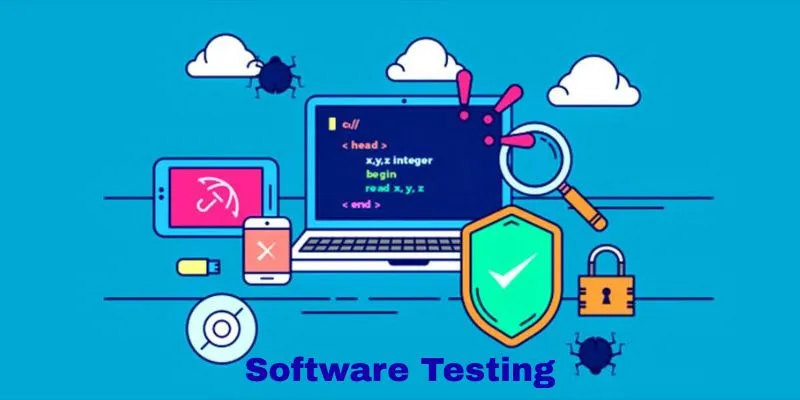
The quality of your test cases determines the quality of your results. Effective test case design techniques help testers ensure maximum coverage, detect defects early, and validate that software meets user expectations. Well-structured test cases not only improve efficiency but also reduce rework, making them a critical aspect of any testing strategy. This article explores key test case design techniques that drive better testing outcomes and enhance overall software quality. Enrolling in a Software Testing Course in Bangalore at FITA Academy can help aspiring testers gain practical knowledge of these techniques and apply them effectively in projects.
1. Understanding the Importance of Test Case Design
Test case design is the process of creating detailed, step-by-step testing scenarios that evaluate specific functionalities or requirements of a software application. A well-designed test case includes inputs, execution conditions, expected results, and postconditions. Its main objective is to guarantee that the software behaves as intended across all possible scenarios.
Poorly designed test cases can lead to missed defects, wasted time, and inconsistent testing results. Conversely, effective test case design techniques promote systematic testing, increase defect detection rates, and provide a clear path for automation and regression testing. By applying structured design methods, testers can achieve higher test coverage with fewer test cases, saving both time and effort.
2. Common Challenges in Test Case Design
Before exploring techniques, it’s important to understand the challenges testers face when designing test cases. A Software Testing Course in Hyderabad helps learners overcome these challenges by teaching effective strategies for creating accurate and efficient test cases.
- Incomplete Requirements: Ambiguous or missing requirements make it hard to create accurate test cases.
- Limited Time: Testers may have to prioritize tests due to tight deadlines, which can reduce coverage.
- Redundancy: Overlapping or repetitive test cases waste time and resources.
- Lack of Traceability: Without proper linking between requirements and test cases, coverage gaps can occur.
- Complex Scenarios: Handling multiple input combinations or system dependencies can complicate test design.
To overcome these challenges, testers rely on proven test case design techniques that systematically cover both expected and unexpected user behaviours.
3. Effective Test Case Design Techniques
a. Boundary Value Analysis (BVA)
Boundary Value Analysis focuses on testing the boundaries between partitions rather than individual values. Since errors often occur at input boundaries, this method tests values just below, at, and above the limit.
For example, if a valid age range is 18–60, test cases would include 17, 18, 60, and 61.
This approach minimizes the number of test cases while maximizing defect detection at critical points. Enrolling in a Software Testing Course in Delhi helps learners master such techniques to improve testing efficiency and ensure higher software quality.
b. Equivalence Partitioning (EP)
Equivalence Partitioning divides input data into groups or “partitions” that are expected to behave similarly. Only one test case from each partition is needed, reducing redundancy.
For example, if an input field accepts numbers from 1 to 100, you can create one test case for valid inputs (e.g., 50) and another for invalid inputs (e.g., 0 or 101).
This technique ensures representative coverage of valid and invalid scenarios without excessive testing.
c. Decision Table Testing
Decision tables are powerful tools for handling complex business rules. They map input conditions to expected outcomes, helping testers identify missing combinations.
For instance, a loan approval system may depend on multiple factors like credit score, income, and loan amount. Using a decision table ensures that all possible combinations of these inputs are covered and verified systematically.
d. State Transition Testing
This technique is ideal for systems that change behavior based on prior states, such as login sessions or workflow systems. A Software Testing Course in Trivandrum helps learners understand and apply such state-based testing methods effectively to ensure accurate software behavior across different scenarios.
Testers define various states (e.g., “logged in,” “logged out,” “session expired”) and transitions between them. By testing valid and invalid transitions, this method ensures that the system responds appropriately to all possible user actions.
e. Error Guessing
Error Guessing relies on the tester’s experience and intuition to identify potential problem areas.
For example, a tester might intentionally enter invalid data types or omit required fields to check how the system handles unexpected input.
While not systematic, this technique complements structured testing methods by uncovering defects that might be missed otherwise.
f. Pairwise Testing
Pairwise testing, also known as combinatorial testing, ensures that all possible combinations of input pairs are tested at least once.
This technique is particularly useful when multiple parameters can interact in unexpected ways, but testing every combination would be impractical.
Automated tools often support pairwise testing, allowing testers to maximize coverage efficiently.
4. Best Practices for Designing Effective Test Cases
- Understand Requirements Clearly: Start by analyzing functional and non-functional requirements in detail.
- Prioritize Test Scenarios: Focus on high-risk and high-impact areas first.
- Use a Consistent Format: Each test case should include clear preconditions, steps, inputs, and expected results.
- Avoid Redundancy: Reuse modular test cases where possible and eliminate duplicates.
- Review and Update Regularly: Keep test cases aligned with changing requirements or system updates.
- Leverage Automation: Use automated testing for repetitive tasks and Case studies for regression tests to save time and improve accuracy.
Learning how to design effective test cases requires both theoretical knowledge and hands-on practice. Offers a comprehensive Software Testing Course in Chandigarh that cover test design techniques, manual and automation testing tools, and real-world project applications. Students gain practical experience in applying methods like boundary value analysis, equivalence partitioning, and State Transition Testing to real-world projects. By mastering these skills, aspiring testers can enhance their ability to deliver high-quality software and succeed in competitive IT environments.
Also Check:
